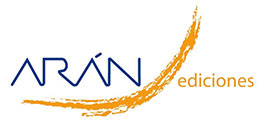Trabajo Original
Validation of a food frequency questionnaire for the indigenous Épera-siapidara people in ecuador
María Pilar Villena-Esponera, Rafael Moreno-rojas, Manuel Romero-Saldaña, Guillermo Molina-Recio
 Número de descargas:
8533
Número de descargas:
8533
 Número de visitas:
8896
Número de visitas:
8896
 Citas:
3
Citas:
3
Compártelo:
Background: A Food Frequency Questionnaire (FFQ) must be designed and validated in the local environment to ensure that the method is adapted to the objectives of the study and the population.Objective: The aim of this study was to validate an FFQ to evaluate the food consumption pattern of the Épera-Siapidara population of Ecuador. One hundred and fourindividuals (54% men and 46% women), aged between 2 and 84, took part in the study.Methods: The validity of this tool was assessed by comparing the relationship between the average daily nutrient intake estimated by the FFQ and the intake estimated in the three non-consecutive 24 h dietary recalls (24hR). The existing correlations were evaluated by Pearson’s or Spearman’s correlation, the inter-class correlation coefficient, Lin’s concordance correlation coefficient and a Bland-Altman plot.Results: The values estimated by the FFQ were significantly higher for minerals and vitamins. The relative correlation coefficients ranged from 0.71 to 0.23 for Na and Ca, respectively, while the inter-class correlation coefficient ranged from 0.84 to 0.33 for Na and cholesterol, respectively. Lin’s concordance correlation coefficient was higher for macronutrients, with values ranging from between 0.35 for lipids to 0.51 for energy. Only 6% of the participants were wrongly classified. The Bland-Altman plots showed an overestimation of macronutrient and calcium intake by the FFQ compared with the 24hR, and an underestimation of fiber intake.Conclusion: The FFQ demonstrated a good external consistency, which makes it a suitable instrument for correctly identifying the food and nutrient intake of the Épera-Siapidara population.
Palabras Clave: Validation studies; Nutrition Surveys; Indigenous population; Ecuador
Artículos más populares
Revisión: Inteligencia artificial generativa ChatGPT en nutrición clínica: avances y desafíos
ChatGPT y otras herramientas de inteligencia artif...
Revisión: Suplementación con micronutrientes y sus beneficios: ¿por qué y cuándo?
Introducción: los micronutrientes participan en la...
-
Licencia creative commons: Open Access bajo la licencia Creative Commons 4.0 CC BY-NC-SA
https://creativecommons.org/licenses/by-nc-sa/4.0/legalcode




